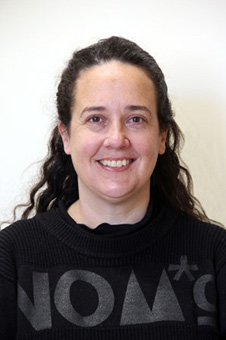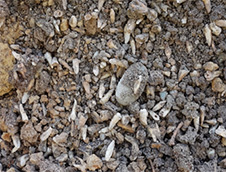Four years ago, hundreds of teeth from a past era were uncovered on an Invercargill building site. Science has revealed a little of what life was like for the people they belonged to.
In a study, just published in the American Journal of Biological Anthropology, researchers analysed first molars of four individuals found when the Leviathan Gift Depot site, home to Victorian dental practices from 1881 to 1905, was excavated in 2019.
The research is the first to study the people themselves from a colonial Aotearoa city centre.
By applying a range of scientific methods to just a fraction of a single tooth, the researchers were able to determine the sex, diet, social class, and place of residence of the people they were extracted from.
 Dr Siân Halcrow.
Dr Siân Halcrow.
Co-author Dr Siân Halcrow, of the University of Otago Department of Anatomy, says the teeth were from three males and one female who all grew up in Aotearoa.
“We found that these dental patients were second or third-generation colonists to Aotearoa, with fairly similar childhood diets, who were potentially lower-class individuals, and either living in, or passing through, the growing colonial centre of Invercargill,” she says.
While they ate a typical ‘pākeha’, or European diet likely consisting of meat, milk, root vegetables, wheat, barley, and oats, only one displayed evidence of being weaned from breastmilk.
“Invercargill expanded in the late 1800s, due to growth of farming in Southland, and its role as a major port for whaling and sealing. Colonists began to flock to the town, so it is not surprising that these individuals migrated to Invercargill from other urban or rural areas in the South Island or lower North Island.
“Despite the colonial period being a time of major adaptation and social change in Aotearoa, there is little bioarchaeological analysis of life experiences from the time.
“The work was also unique as most bioarcheological studies rely on the remains of the dead, but these teeth were extracted from living people.”
 Human teeth discovered on an Invercargill building site in 2019.
Human teeth discovered on an Invercargill building site in 2019.
Just how so many teeth ended up on the site is an example of how lessons from the past inform present-day issues.
“The Dee St teeth were extracted from people who went to practitioner dentists – those who were more ‘mechanical’, with a focus on extracting teeth and fitting dentures. These practitioner dentists were cheaper than their professional counterparts who charged more for restorative and preventative care.
“It could have been those who visited these dentists were from the lower classes, showing how some social groups have less access to preventative dental care and highlighting a dichotomy which still exists today.”
Publication details
Extracting the truth through chemical analyses: early life histories of Victorian-era dental patients in Aotearoa New Zealand
Emma L. Sudron, Rebecca L. Kinaston, Hayden Cawte, Torsten Kleffmann, Abhishek Kumar, Robyn Kramer, Claudine Stirling, Malcolm Reid, David Barr, Amy McStay, Megan Lawrence, Kathryn, Siân E. Halcrow
American Journal of Biological Anthropology
For more information, contact:
Dr Siân Halcrow
Department of Anatomy
University of Otago
Email sian.halcrow@otago.ac.nz
Ellie Rowley
Communications Adviser
University of Otago
Mob +64 21 278 8200
Email ellie.rowley@otago.ac.nz